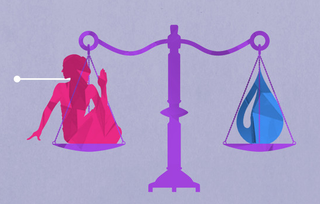
Ayurveda: "The Knowledge of Life"
Ayurveda is considered to be one of the oldest medical systems in the world, originating in India and evolving over thousands of years. The fundamentals are to balance and integrate the body, mind and spirit. When in balance, these three things provide and promote health and wellness.
There are considered to be two texts based on these principles. These are Caraka Samhita and Sushruta Samhita. The texts describe eight branches of Ayurvedic Medicine:
- Internal Medicine
- Surgery
- Treatment of head and neck disease
- Gynecology, Obstetrics and Pediatrics
- Toxicology
- Psychiatry
- Care of the elderly and rejuvenation
- Sexual Vitality
Ayurveda is practiced in India by nearly 80% of the population using it exclusively or in combination with Western medicine. In the United States, more than 200,000 adults used Ayurvedic medicine in 2006. Ayurveda has the following underlying concepts:
-
Interconnectedness:
-
Constitution (Prakriti):
-
Life Forces (Doshas):
The doshas are energies that are the building blocks of the parkriti and control the activities of the body. The balance of the doshas determines the chances of developing disease. Each dosha is made up of two of the following elements: Ether (upper regions of space), air, fire, water, and earth. There are three doshas in Ayurveda:
- Vata: This combines the elements of ether and air. It is considered to be the most powerful dosha.
- Pitta: This dosha is based on the elements of fire and water. This dosha controls the hormones and digestive system.
- Kapha: Based on the elements of water and earth, Kapha helps maintain strength and immunity and helps to control growth.
Above are the basic principles of Ayurveda. To get started with an Ayurvedic lifestyle, take our Dosha Quiz to find your Prakriti! Look forward to learn more about this way of life.
*Information extracted from U.S. Department of Health and Human Services.

